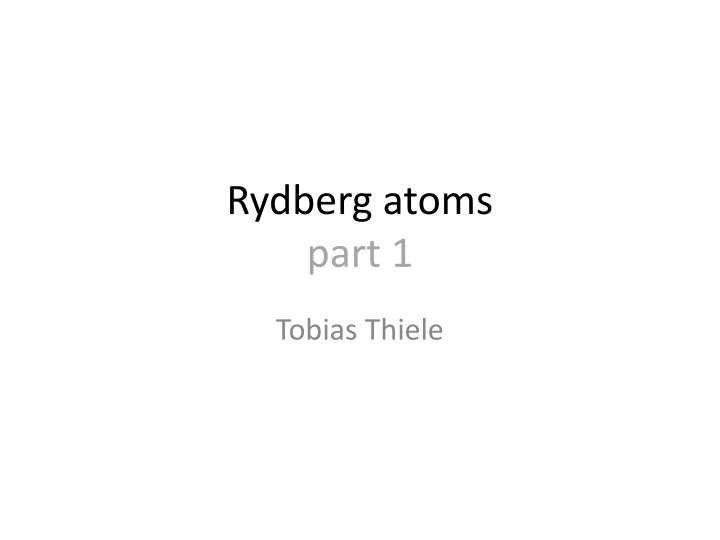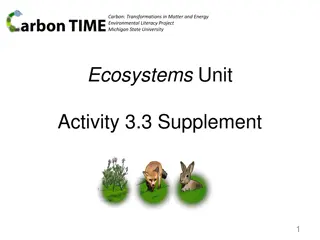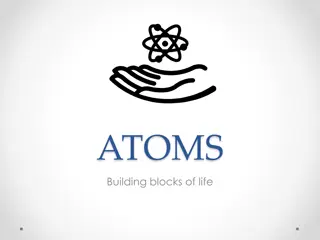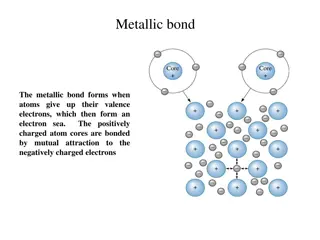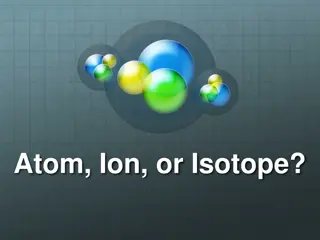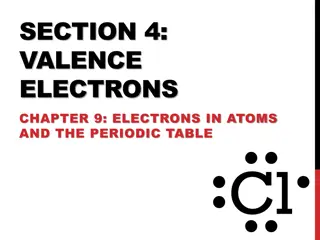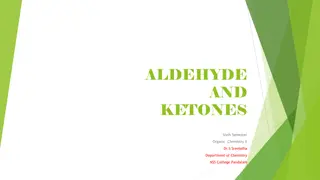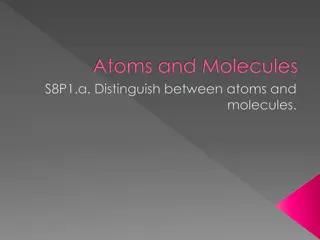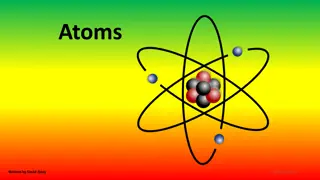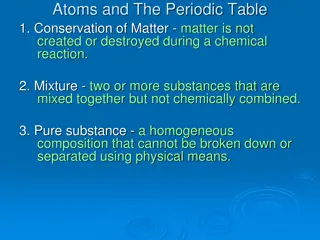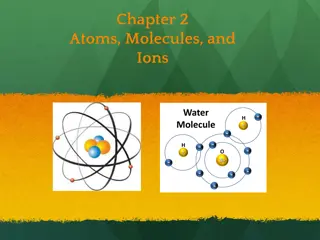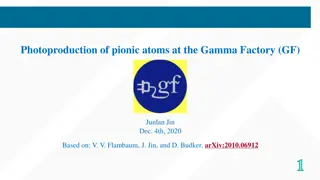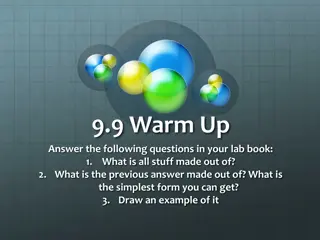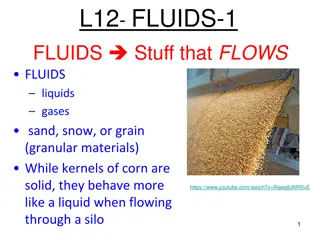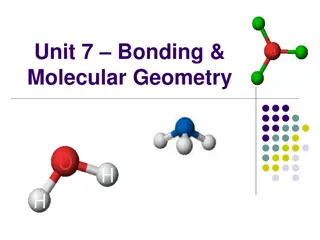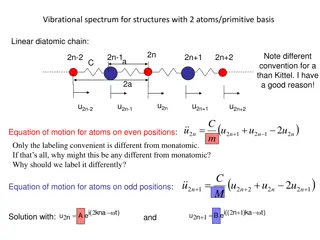Rydberg Atoms Exploration
Delve into the intriguing world of Rydberg atoms, where atoms reach high principal quantum states, exhibiting exaggerated properties. Discover the origins of Rydberg atoms, their energy formulas, and the implications of quantum defect. Uncover the similarities and differences between Rydberg atoms and hydrogen cores, as well as the radial structures and energy levels of atoms. Explore how Rydberg atoms challenge traditional atomic theories and open doors to new understandings of atomic behavior.
Uploaded on Mar 11, 2025 | 2 Views
Download Presentation

Please find below an Image/Link to download the presentation.
The content on the website is provided AS IS for your information and personal use only. It may not be sold, licensed, or shared on other websites without obtaining consent from the author.If you encounter any issues during the download, it is possible that the publisher has removed the file from their server.
You are allowed to download the files provided on this website for personal or commercial use, subject to the condition that they are used lawfully. All files are the property of their respective owners.
The content on the website is provided AS IS for your information and personal use only. It may not be sold, licensed, or shared on other websites without obtaining consent from the author.
E N D
Presentation Transcript
Rydberg atoms part 1 Tobias Thiele
Content Part 1: Rydberg atoms Part 2: 2 typical (beam) experiments References T. Gallagher: Rydberg atoms
Introduction What is Rydberg? Rydberg atoms are (any) atoms in state with high principal quantum number n. Rydberg atoms are (any) atoms with exaggerated properties equivalent!
Introduction How was it found? In 1885: Balmer series: Visible absorption wavelengths of H: 2 bn =n 2 4 Other series discovered by Lyman, Brackett, Paschen, ... Ry ~ ~ = Summarized by Johannes Rydberg: 2 n
Introduction Generalization In 1885: Balmer series: Visible absorption wavelengths of H: 2 bn =n 2 4 Other series discovered by Lyman, Brackett, Paschen, ... Ry ~ ~ = Quantum Defect was found for other atoms: 2) ( n l
Introduction Rydberg atom? Hydrogen Energy follows Rydberg formula: =13.6 eV 0 hRy hRy = = E E 2 2 ( ) n n l 0 0 Energy
Quantum Defect? Energy follows Rydberg formula: Quantum Defect hRy n-Hydrogen = E E 2 ( ) n l Hydrogen 0 Energy
Rydberg Atom Theory e Rydberg Atom + A Almost like Hydrogen Core with one positive charge One electron What is the difference? No difference in angular momentum states
Radial parts-Interesting regions W r = Ion core 0r 1 ( ) V r 1 r = + ( ) ( ) V r V r r core 0 r Interesting Region For Rydberg Atoms l H nH
1 = (Helium) Energy Structure ( 2 W 2) n l l usually measured Only large for low l (s,p,d,f) He level structure l is big for s,p Excentric orbits penetrate into core. Large deviation from Coulomb. Large phase shift-> large quantum defect
1 = (Helium) Energy Structure ( 2 W 2) n l l usually measured Only large for low l (s,p,d,f) He level structure l is big for s,p 1 dW = 3) ( dn n l
Electric Dipole Moment Electron most of the time far away from core Strong electric dipole: Proportional to transition matrix element r e d = = d r e = cos( ) e r f i f i f i We find electric Dipole Moment Cross Section: 2 1 cos( 2 r ) d r l l n f i 4 n 1 1 dW 2 4 = = d W 0n a n 3) ( dn n 2) ( 2 n l l
( ) = + = Stark Effect H H d F E 0 For non-Hydrogenic Atom (e.g. Helium) Exact solution by numeric diagonalization of H H f i f = + d n~ F 0 i f i in undisturbed (standard) basis ( ,l,m) 1 = W Numerov 2) ( 2 n l 1 1 dW 2 4 = = d W 0n a n 3) ( dn n 2) ( 2 n l l
Stark Map Hydrogen n=13 Levels degenerate n=12 Cross perfect Runge-Lenz vector conserved n=11
Stark Map Hydrogen n=13 k=-11 blue n=12 k=11 red n=11
Hydrogen Atom in an electric Field Rydberg Atoms very sensitive to electric fields Solve: ( + = F d H H 0 ) = E in parabolic coordinates Energy-Field dependence: Perturbation-Theory ( 17 16 2 2 n ) 1 3 F = + ( 3 + + 4 2 2 2 5 ( ) ) 9 19 ( ) W F n n n n n n n m O n 1 1 2 2 n n n n 1 2 1 2 2 k k
Stark Map Helium n=13 Levels not degenerate n=12 s-type Do not cross! No coulomb-potential n=11
Stark Map Helium n=13 k=-11 blue n=12 k=11 red n=11
Stark Map Helium Inglis-Teller Limit n-5 n=13 n=12 n=11
Rydberg Atom in an electric Field When do Rydberg atoms ionize? No field applied Electric Field applied Classical ionization: Valid only for Non-H atoms if F is Increased slowly 1 1 dW 2 4 5 = = d W 0n a n n FIT 3) ( dn n 2) ( 2 n l l
Rydberg Atom in an electric Field When do Rydberg atoms ionize? No field applied Electric Field applied Classical ionization: 1 Fz r 1 n Fcl= 4 16 = + V 2 1 n W = = F cl 4 4 16 Valid only for Non-H atoms if F is Increased slowly 1 1 dW 4 1 2 4 5 Fcl n = = d W 0n a n n FIT 16 3) ( dn n 2) ( 2 n l l
(Hydrogen) Atom in an electric Field When do Rydberg atoms ionize? No field applied Electric Field applied Quasi-Classical ioniz.: 2 Fb= 4 9 n 1 n Fcl= 4 16 2 1 Z m F 1 n Fr= ( = + ) 2 2 V 4 9 2 4 4 1 n = red 2 W 4 9 = F 2 n 4 Z blue 2 4 9 1 1 dW 4 1 2 4 5 Fcl n = = d W 0n a n n FIT 16 3) ( dn n 2) ( 2 n l l
(Hydrogen) Atom in an electric Field When do Rydberg atoms ionize? No field applied Electric Field applied Quasi-Classical ioniz.: 2 Fb= 4 9 n 1 n Fcl= 4 16 2 1 Z m F 1 n Fr= ( = + ) 2 2 V 4 9 2 4 4 1 n = red 2 W 4 9 = F 2 n 4 Z blue 2 4 9 1 1 dW 4 1 2 4 5 Fcl n = = d W 0n a n n FIT 16 3) ( dn n 2) ( 2 n l l
(Hydrogen) Atom in an electric Field Blue states Red states classic Inglis-Teller
Lifetime From Fermis golden rule Einstein A coefficient for two states 4 c , , n l n l 2 3 n e max( , ) l l 2 , , , = l n l A n l r nl , , , n l n l + 3 3 2 1 l 1 = n Lifetime A , , , , n l n l n l l , , n l 1 1 dW 4 1 2 4 5 Fcl n = = d W 0n a n n FIT 16 3) ( dn n 2) ( 2 n l l
Lifetime From Fermis golden rule Einstein A coefficient for two states 4 c , , n l n l 2 3 n e max( , ) l l 2 , , , = l n l A n l r nl , , , n l n l + 3 3 2 1 l 1 = n 3 Lifetime A 2 n For l 0: Overlap of WF , , , , n l n l n l l , , n l For l 0: Constant (dominated by decay to GS) 1 1 dW 4 1 3 2 4 5 Fcl n = = d W n 0n a n n FIT 0 , n 16 3) ( dn n 2) ( 2 n l l
Lifetime From Fermis golden rule Einstein A coefficient for two states 4 c , , n l n l 2 3 n e max( , ) l l 2 , , , = l n l A n l r nl , , , n l n l + 3 3 2 1 l 1 = n 2 Lifetime A n For l n: , , , , n l n l n l l , , n l 3 n For l n: Overlap of WF 1 1 dW 4 1 3 5 2 4 5 Fcl n = = n d ,n W n 0n a n n FIT , l 16 3) ( dn n 2) ( 2 n l l
Lifetime 1 2 3 n 4 e max( , ) l l = n 2 , , , = l n l A n l r nl A , , , n l n l , , , , n l n l n l + 3 3 2 1 c l l , , n l Stark State 60 p small n Circular state 60 l=59 m=59 ( ) , ( l n Statistical mixture State ) l , , 1 ) 1 n ( n l 3 5 . 4 n 5 n Scaling 3 r 2 2 n n (overlap of ) 7.2 s 70 ms ms Lifetime 1 1 dW 4 1 3 5 2 4 5 Fcl n = = n d ,n W n 0n a n n FIT , l 16 3) ( dn n 2) ( 2 n l l
